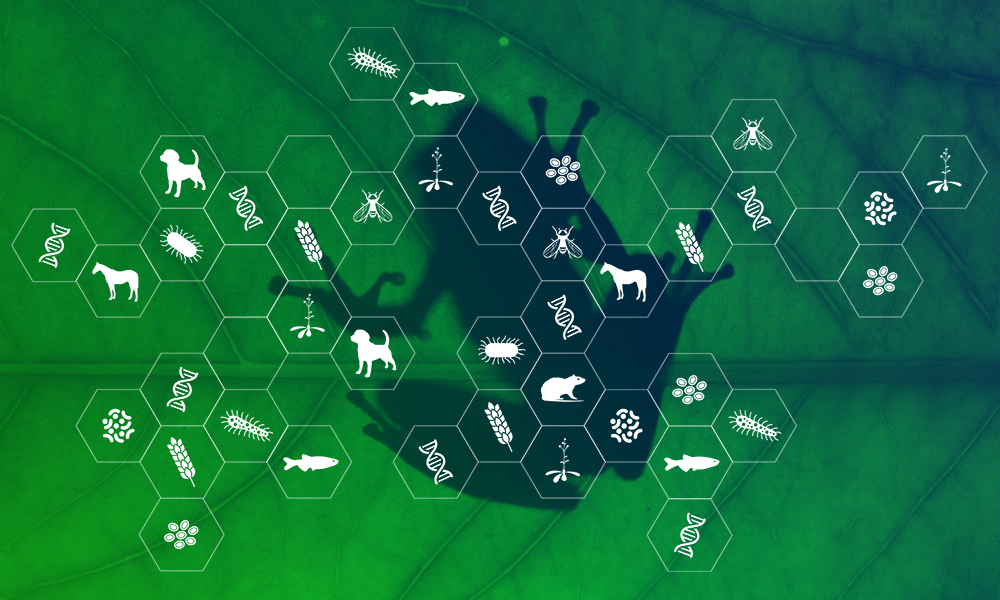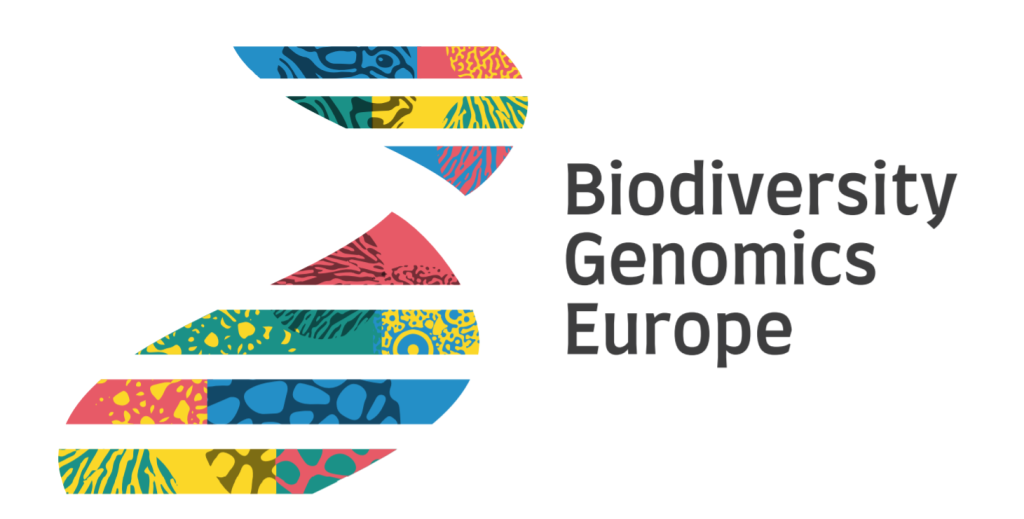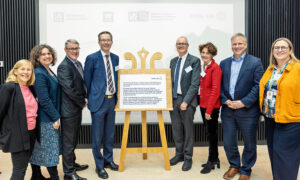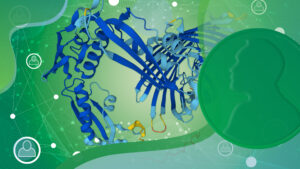DNA barcoding
Short sequences of DNA can be used to identify and discriminate between species. This is analogous to the way conventional barcodes distinguish products in a supermarket.
European experts gather to launch a project that aims to characterise and conserve life on Earth using DNA data

The application of genomic science to biodiversity research is fundamentally changing conservation science and policy. The new pan-European Biodiversity Genomics Europe (BGE) consortium is helping to lead the way.
Approximately one in four species is currently threatened with extinction. A better understanding of how life on Earth functions and responds to environmental pressures is vital in the fight to reverse this rapid loss of biodiversity and degradation of our ecosystems.
The BGE consortium aims to use genomics to gain further insights into this global challenge. By bringing together Europe’s leading experts in two fundamental DNA-based technologies – DNA barcoding and genome sequencing, the BGE consortium will streamline the rollout of these methods across the continent. Data obtained from the project will help scientists understand how biological systems function and crucially, how species respond and adapt to environmental change.

Short sequences of DNA can be used to identify and discriminate between species. This is analogous to the way conventional barcodes distinguish products in a supermarket.
To support its delivery, BGE will bring together two newly formed networks: BIOSCAN Europe, which focuses on DNA barcoding, and the European Reference Genome Atlas (ERGA), which focuses on genome sequencing of all eukaryotic European species.
DNA barcoding is key to the identification and monitoring of species. Providing researchers with a simple and single way to access these data streamlines this process. Data collected as part of the BGE project will be stored in EMBL-EBI’s European Nucleotide Archive (ENA) where researchers can freely access the DNA barcodes and sequencing data for their species of interest.
“As part of ERGA, the consortium has already begun setting up workflows for data archiving to manage the flow of data into the ENA. Standardisation and automation early in the project are key to managing the large volume of data being generated,” said Josie Burgin, Bioinformatics Project Manager at EMBL-EBI. “We also play a role in BIOSCAN Europe by developing and supporting infrastructure for European barcoding data and advancing data submission standards. This work contributes to the existing work of the International Barcode of Life Consortium and will help us to link the European data generated as part of the BGE project to infrastructure around the world.”
Researchers in EMBL-EBI’s Ensembl Team are contributing to the BGE project using their demonstrated expertise in creating high-quality genome annotations and intuitive data portals that will make the wealth of BGE data openly available and easily accessible to the global scientific community. EMBL-EBI archives and the data portal will also play a vital role in coordinating the different genome annotation contributions to the project from the many European partners involved.
“This project represents a European community involving many different institutes and organisations that all want to work together and contribute,” said Fergal Martin, Eukaryotic Annotation Team Leader at EMBL-EBI. “Ensembl will act as a centralised hub for the genome annotations generated as part of the project, but there will also be many annotations generated by the community with the idea that we would work together to help design new workflows and test pipelines to find optimal solutions together to achieve more robust result. This type of collaboration will lead to some exciting new developments in the genome annotation field.”
The team have previously put their skills to the test as part of the Darwin Tree of Life project that aims to sequence all species within the UK and Ireland. Now, they will scale these processes up as part of this broader European project and help to drive a coordinated global way of working as part of their role within the Earth BioGenome Project, which aims to sequence, catalogue, and characterise the genomes of all of Earth’s eukaryotic biodiversity.
“BGE is an important component of the Earth BioGenome Project which is made up of over 50 different biodiversity projects and networks,” said Peter Harrison, Genome Analysis Team Leader at EMBL-EBI. “Collaborating and coordinating these projects both on a continent scale and globally is the best way to ensure that we have a consistent output leading to comparable data and standardised metadata across projects. This also means that the data obtained from European species sequenced as part of the BGE project will be consistent with data collected as part of the sub-projects within individual countries and regions such as the Darwin Tree of Life project. All these standardised data and the annotations created as part of the project will also be openly available to the scientific community through the ERGA and Darwin Tree of Life public data portals that EMBL-EBI develops.”
The EU’s Biodiversity Strategy for 2030 and the European Green Deal make clear commitments to address challenges such as pollinator decline, deterioration of marine habitats, and impact of invasive non-native species on biodiversity. The Horizon Europe-funded BGE consortium is a major investment in European genomic science and provides a means to achieve these aims.
“We will align the efforts and resources of Europe’s DNA barcoding and genome sequencing communities to dramatically scale up biodiversity genomics research across the continent, opening the door for the kind of developments which will position Europe at the forefront of biodiversity genomics research,” said Dimitris Koureas, BGE’s project director and CIO at Naturalis Biodiversity Center, The Netherlands.
Read the full press release on the BGE website.
Find out more about Planetary Biology research at EMBL.
The €21 million BGE project is co-funded by the European Commission, as well as the UK and Swiss governments. This first large European project will run until 2026. It brings together organisations from the BIOSCAN Europe DNA-barcoding consortium (104 partner institutions across 29 countries) and the ERGA genome-sequencing consortium (709 members across 37 countries). BGE was officially launched on 26 September 26 2022.
BIOSCAN Europe brings together existing European national networks, scientists and projects that work on the monitoring of biodiversity using DNA to build an efficient European system of interconnected facilities for rapid identification and monitoring of species. The initiative is part of the International Barcode of Life Consortium (iBOL) and its global BIOSCAN initiative, which aims to transform understanding of species diversity, their interactions, and dynamics. BIOSCAN Europe’s aim is to establish a European hub for the International Barcode of Life consortium.
The ERGA initiative is a pan-European scientific community of experts in genome sequencing that aims to coordinate the generation of reference-quality genomes for all eukaryotic European species. ERGA follows a distributed model to create and consolidate a collaborative and interdisciplinary network of scientists across Europe and associated countries. ERGA works to develop and propagate guidelines for scaling up all the steps required for state-of-the-art reference genome generation through training and knowledge transfer.



